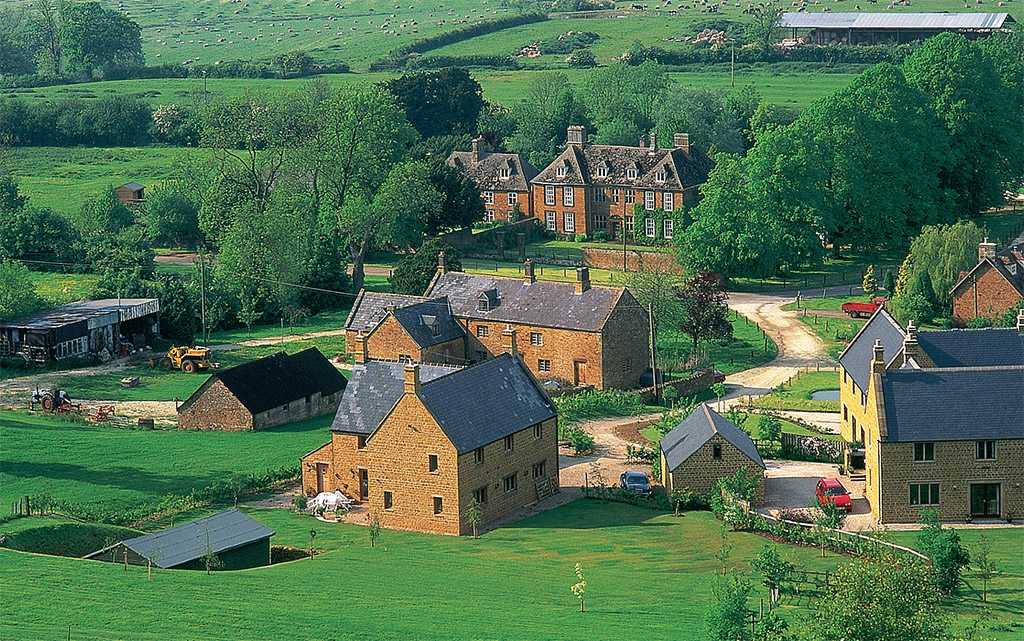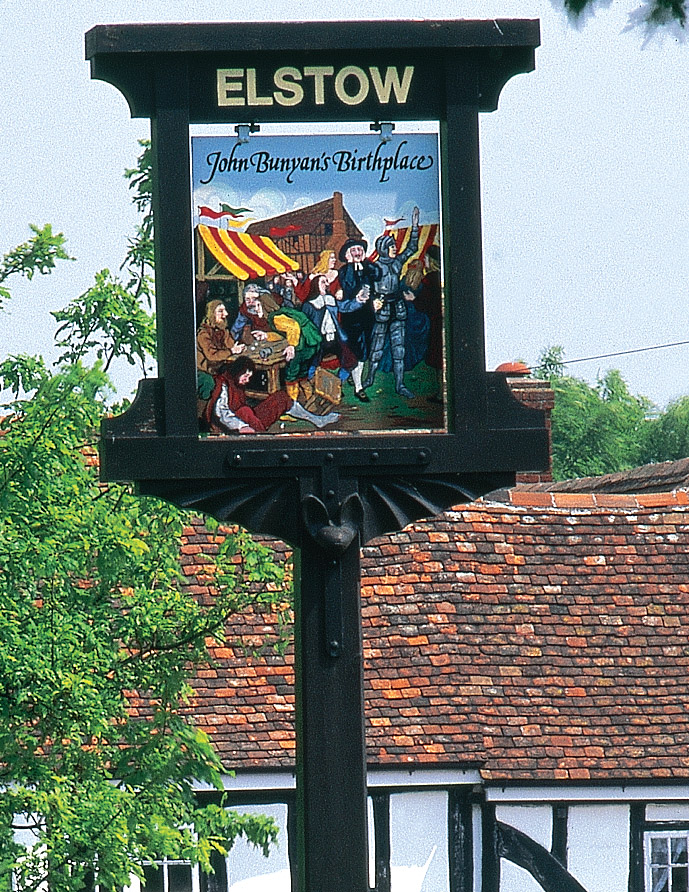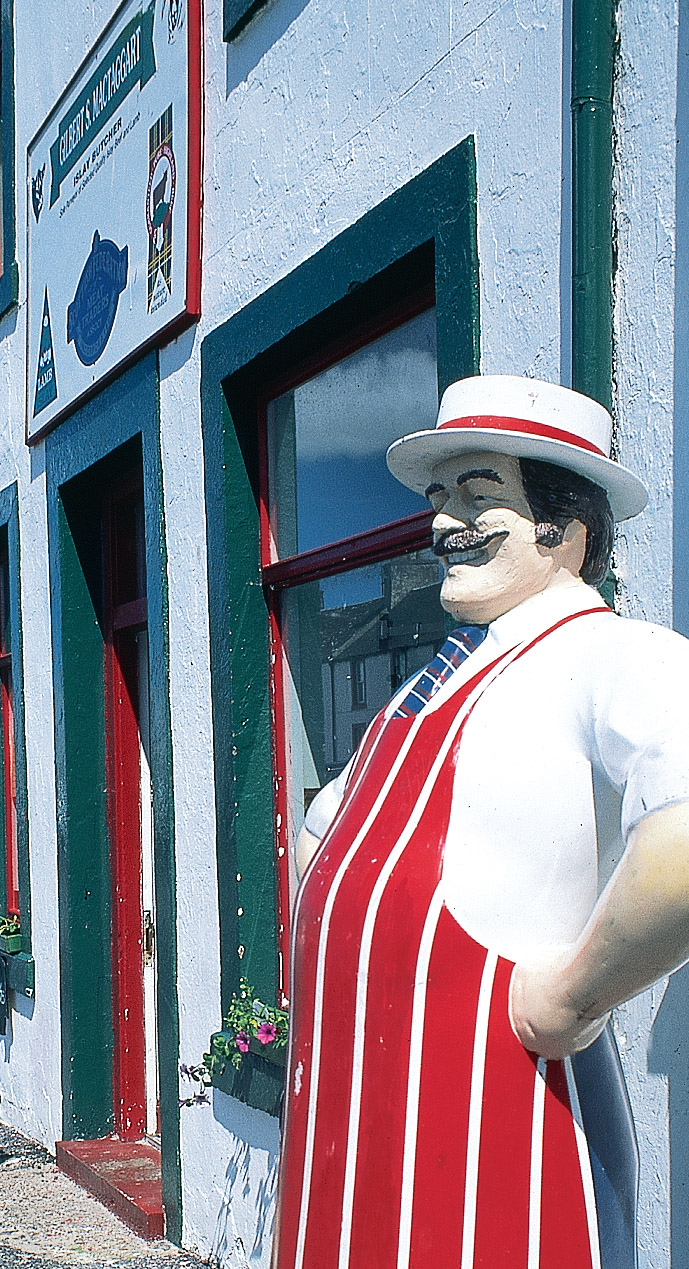
[caption id="TheVillageAJournalistInvestigates_img1" align="aligncenter" width="1024"]

Jim Hargan
THE MOST DISTINCTIVE DETAIL in the British countryside is the village. You can’t get around it, as all the local roads converge on its center. Beautifully kept, quaintly historic and densely built, the classic village presents a line of ancient cottages and colorful gardens, lively with kids on bicycles and mums meeting in front of the post office. You slow down, enjoy the view, speed up as you leave—then slow down again in another three or four miles, as you hit the next village.
So what’s the story with all these villages? Here’s an investigative report—the what, where, when, who, how and why.
What. Lots of places are called villages, but the classic village consists of one or two lines of very long, extremely narrow lots, with one of their ends facing a lane. A cottage sits at the front of the lot, taking up nearly its entire width. At the rear runs a back lane upon which garages (converted from stables) open. Cottages may line a lane, or front on a large, open grassy area of rectangular or triangular shape—the green.
Where. Mainly England. Some parts of England are crawling with classic villages; others have few, if any. The best places for villages are Suffolk, Dorset and a broad area centered on the Cotswolds. Classic villages (with the long lots) are harder to find in Kent, Cornwall and Yorkshire, and rare in Wales and Scotland.
When. The village started to appear in the 900s and reached its zenith around 1300. Since then about half of the classic villages have disappeared, and only a few have been created (mostly as quaint countryside features meant to enhance the charm of highly landscaped great estates).
Who. King Alfred the Great, of course. Good King Alfred invented the borough around AD 890 as a combination anti-Viking fort and marketplace; it was so successful that eventually the Viking freebooter army left England for easier pickings in France. Unlike the dispersed, compact farms of the Dark Ages, borough dwellers lived together behind borough walls and farmed the surrounding lands in a cooperative manner that spread both the risks and the rewards. This worked so well that large landowners reorganized their rural settlements to exploit the borough farming methods (without the walls or the markets). Over the centuries, those agrarian villages increasingly occupied the spaces between the boroughs—covering the parts of England most influenced by Alfred’s Wessex dynasty
[caption id="TheVillageAJournalistInvestigates_img2" align="aligncenter" width="689"]

Jim Hargan
[caption id="TheVillageAJournalistInvestigates_img3" align="aligncenter" width="689"]

Jim Hargan
How. The original farming village, between 900 and 1400, was run as a mandatory cooperative. It had no finished housing; its peasants lived in hovels along the lane and kept animals and a vegetable garden in the long lot behind. Huge open fields, unbroken by any fence or hedge, surrounded this center. The fields were plowed and cropped in common, with each family inheriting the rights to a certain number of long, skinny strips scattered widely over the fields, sized and shaped for easy plowing. The village shared heavy equipment, such as plows and ox teams. Several times a year, a manor court, with the lord’s steward presiding, would decide what got planted and where, which of the great fields would be fallowed, who got to use the plow first and how to punish the scofflaws who violated the court’s ruling (usually a fine, which the lord would pocket).
From 1400 to 1900, the village slowly changed to what we see today. Open fields were subdivided into rectangular parcels surrounded by stone fences or hedges. Families traded their rights in a group of strips for a set of parcels. Agricultural profits increased, and successful yeomen (small farmers who owned their own land) built good-quality, permanent houses—the cottages we still see today. Farmers no longer had to live in a village, as there was no manor court telling them what to do. The village became a hub of economic activity, however, a place with a smithy, a market and an alehouse. While some farmers moved out to their farms, many stayed and thrived, making enough money in the new cash-based economy to build nice, permanent cottages. About half the original classic villages shrank in size or disappeared; the rest survive to this day.
Why. Survival, at first: Robbers would attack isolated farmsteads, but not villages. The great landowners liked it, too. The lord’s lands made more money for him when his peasants weren’t dying off every few years, and the manor courts did a good job of maximizing long-term return on investment. As subsistence gave way to cash cropping, the classic village evolved from a good method of keeping peasants alive and working into a useful economic entity.
And that’s what you see today. It’s why the cottages are so close together, why they are so old and no older, and why there’s a back lane, a church, a manor, a post office, a petrol station (the former smithy) and a pub. It’s why there are footpaths all around the village—old paths from the village center into the great open fields that once surrounded it. When you visit a classic village, you briefly become part of a living entity that goes back to the manor courts of feudal England, and beyond that to the time of Alfred the Great.
Next time we’ll explore a remnant of the medieval period’s great open fields—the field paths that the villagers followed to reach their allotments. Today those paths are fossilized as a system of public footpaths that allow you to explore the countryside in a way impossible in America—over the fields themselves.
Editor’s note: In 1348 the bubonic plague—the Black Death—reached England. Its successive visitations over 20 years reduced England’s population by at least a third. Whole villages were depopulated and subsequently disappeared from the landscape. To this day across the countryside, particularly in East Anglia, it is not uncommon to see a Norman stone church standing alone in the middle of a field—where once a village surrounded it.
Among the huge social costs of such a pandemic was a severe labor shortage. For the first time, peasants found their labor in competitive demand. Attempts to keep inhabitants “down on the farm” failed, and by the end of the 14th century, villeinage was at an effective end. Many freemen became self-sustaining with the purchase of small parcels of land from lords of the manor who had no labor with which to farm their holdings. The decline of the medieval village can be attributed to the Black Death more than to any other single factor.
D.L.H.





Comments